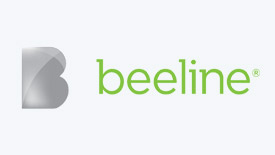With 20 to 30 projects going at once, being able to manage countless deadlines and deliverables in the midst of shifting priorities quickly became a difficult challenge. Additionally, project-related content was being recorded via a hodgepodge of systems, resulting in a mess of email, notes, and phone conversations.
Statland knew there had to be a better way. “We badly needed to centralize, streamline and become more efficient. Project-related information was all over the place, on different network drives, consultant computers, or scattered amongst developers and programmers, managers, all the way up to senior level executives. Not having a unified system makes it very difficult to prioritize properly. There were always three or four priorities that pop forward and we needed a better way to react.”
In this central project workspace, Statland envisioned:
Her teams becoming more efficient. Not only would they be able to integrate project plans with all of the different parts and files, but they would also be able to easily access all the details and ongoing conversations that make up the life cycle of a project. “Just eliminating some of the back and forth email alone was going to save us lots of time.”
A system that would allow her to prioritize tasks from across multiple projects. “Resource planning had become a major issue for us, forcing us into a back corner asking, ‘Do we have enough resources to produce the deliverables on time?”
For Statland, two of the most appealing features of LiquidPlanner are the sliding schedule and Packaging feature which allows Lisa to micro-prioritize tasks across multiple projects – which she found to be a startling contrast from other systems that only allow prioritization from project to project.
“As a project manager trying to manage multiple projects all at once, it’s awesome to change one thing on the schedule and then see how it plays out with other projects, says Statland. “I don’t know any other project management tool that has dynamic scheduling. It really forces you to prioritize things correctly. When that red shows up [in the schedule], you know that change is not going to work across the board. Then you can go back and look at resources, priorities, etc. to find the right solution.”
Additionally, for both short- and long-term work, the ability to track key items at a glance keeps critical items from getting lost amidst the daily hustle and bustle.
Statland continues, “Oftentimes, across our multiple projects, there may be individual tasks that bubble up and shift to high- priority. With LiquidPlanner we created our ‘ASAP’ package where we put items that need to be done right away and make them front and center and closely tracked.”
Now that Beeline uses LiquidPlanner, everything from the project plan to eLearning specs (like audio and other technical requirements) is in its proper place.
“If we’re sharing documents like audio scripts and other content and media, those files can be very large and quite cumbersome. Having the LiquidPlanner project portal really drives the sharing aspect between our customers and our project teams. What we’re also finding is that not only do folks want to share, but the level of detail provided has also gone up,” says Statland.
Additionally, Lisa’s project team members have fully embraced the tool. “With its Apple-like design, LiquidPlanner is friendly and appealing and resonates with people when they use it. Nowadays, it’s all about text and tweeting — when you get to your LiquidPlanner homepage, you can see all the related workplace comments, and similar to Facebook, it gives you a running, real-time commentary, which you can filter. Overall this acts as a kind of public, virtual project space that gets everyone involved and on the same page.”
Not only that, but the entire Beeline project team can see what tasks and deadlines are approaching, as well as who is responsible for each project or task.
“With LiquidPlanner, we are much better at meeting client deadlines, and we can get a view of the whole enterprise, which helps us stay on course with both the short- and long-term deliverables.”
Lisa Statland’s Tips for Project Success
- Have a plan and a communication style that fosters teamwork.
- Clearly understand what your requirements and objectives are before you evaluate and purchase a tool.
- Make sure your online project management system can accommodate multiple projects and initiatives and can also dynamically and automatically adjust and readjust schedules.


